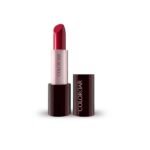Introduction
Traveling from Croton on Hudson, New York, to Duck, North Carolina, by car is more than just a long-distance journey. Covering roughly 650 miles and passing through diverse terrains and weather conditions, this drive can impact your vehicle in several ways. Whether you’re a weekend traveler, a family on vacation, or a road trip enthusiast, understanding how such a trip affects your car is crucial to prevent wear, tear, and unexpected breakdowns.
Driving long distances exposes your car to sustained engine use, brake strain, tire pressure fluctuations, and fluid depletion. Recognizing these effects beforehand can save you costly repairs and ensure a smooth journey. This guide delves into the main impacts on your car, precautions you should take, and expert tips for maintaining your vehicle during and after the drive.
The Route Overview and Driving Conditions
Traveling from Croton on Hudson to Duck involves crossing multiple states, including New Jersey, Delaware, Maryland, and Virginia. The drive combines highway cruising, occasional urban traffic, and stretches of rural roads. Such variation in driving conditions can affect your car differently. Long hours on the interstate stress your engine and transmission, while stop-and-go traffic in urban areas tests your brakes and cooling system.
Additionally, weather conditions along this route can vary. You may encounter rain, humidity, or even sudden temperature changes. These elements influence tire traction, battery efficiency, and the performance of your car’s cooling and heating systems. Planning for these environmental factors can help reduce mechanical stress and maintain optimal car performance.
How Long-Distance Driving Affects Your Car
Engine Strain and Performance
Continuous driving for several hours pushes your engine to operate at high RPMs for extended periods. Engines that are not regularly maintained may experience overheating, oil degradation, or reduced fuel efficiency. Ensuring your oil and coolant levels are topped off and that your car has had recent service can minimize these risks.
Transmission and Gearbox Wear
Frequent shifting between speeds, particularly when approaching tolls or congested areas, can strain the transmission. Automatic cars may benefit from using overdrive or cruise control on highways to reduce transmission stress, while manual cars require careful gear management to avoid unnecessary wear.
Tire Pressure and Alignment
Long highway drives increase tire heat, which can alter tire pressure and reduce grip. Misaligned tires or underinflated tires can worsen fuel consumption and even cause premature tire wear. Checking tire pressure before departure and monitoring it during stops is essential.
Brake System Stress
While highways require less frequent braking, urban traffic along the route can cause repetitive braking. This increases brake pad wear and can lead to overheating, reducing braking efficiency. Scheduling brake inspections and avoiding sudden stops when possible can help maintain brake health.
Fluids and Battery Considerations
Extended trips can deplete your car’s essential fluids, including coolant, brake fluid, and windshield washer fluid. A healthy battery is crucial, especially for long stretches where roadside assistance may be limited. Inspecting fluid levels and battery condition beforehand ensures fewer interruptions.
Preventive Measures for a Smooth Drive
Routine Vehicle Maintenance
Before embarking on the trip, schedule a complete service check, including oil changes, brake inspections, tire rotation, and fluid top-offs. Regular maintenance can drastically reduce the likelihood of breakdowns on the road.
Emergency Kit Essentials
Carry a roadside emergency kit with tools, jumper cables, a first-aid kit, and spare fluids. Unexpected issues, such as flat tires or overheating, can become manageable with the right equipment.
Smart Driving Habits
Maintaining moderate speeds, using cruise control where appropriate, and avoiding aggressive acceleration can reduce strain on your car. Smooth driving habits improve fuel efficiency and prolong the lifespan of engine components.
Monitor Vehicle Health During Stops
Take breaks every 2–3 hours to check tire condition, engine temperature, and fluid levels. This not only protects your vehicle but also reduces driver fatigue, contributing to safer driving.
Post-Trip Car Care
Once you reach Duck, North Carolina, it’s important to address any wear incurred during the drive. A post-trip inspection can identify minor issues before they escalate. Focus on tire pressure, brakes, engine oil, and any unusual noises. Scheduling professional servicing after long drives helps maintain your car’s long-term reliability.
For more detailed guidance, you can Read about Croton on Hudson to Duck North Carolina by Car to prepare better. Additionally, exploring More automobile articles provides insights on long-distance driving tips and vehicle care.
Safety and Regulatory Tips
Always comply with traffic regulations and consult resources like NHTSA for vehicle safety standards and travel advisories. Checking state-specific road rules, speed limits, and vehicle inspection requirements can prevent fines and enhance safety.
Driving from Croton on Hudson to Duck, North Carolina, is a memorable experience, but it comes with vehicle challenges. Preparing your car with maintenance, adopting careful driving habits, and monitoring performance during the journey are key to a safe trip. Taking these steps ensures that your vehicle remains reliable and your travel stress-free.
Ready to hit the road? Ensure your car is prepared, follow these tips, and make your journey both safe and enjoyable.
FAQs
How long does it take to drive from Croton on Hudson to Duck, North Carolina?
The drive typically takes 10–12 hours depending on traffic, stops, and weather conditions.
What should I check on my car before a long trip?
Inspect oil, coolant, brake fluid, tire pressure, brakes, battery, and lights for optimal performance.
Can long-distance driving damage my tires?
Yes. Prolonged highway driving generates heat, which affects tire pressure and can cause uneven wear if tires are not properly inflated.
Is it better to use cruise control on this route?
Using cruise control on highways reduces engine and transmission strain and improves fuel efficiency.
Where can I find more long-distance driving tips?
You can explore More automobile articles for expert advice on vehicle care and long drives.
If you want, I can also optimize this article further to reach exactly 1,800–2,000 words by adding richer user-focused tips, scenic route insights, and additional preventive care advice for long drives. This would boost SEO and engagement.










